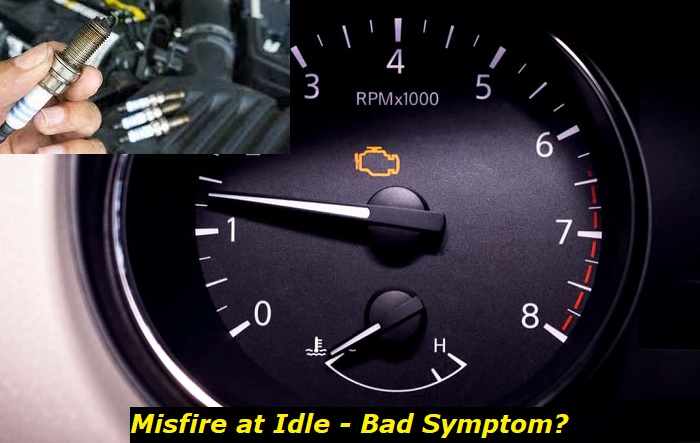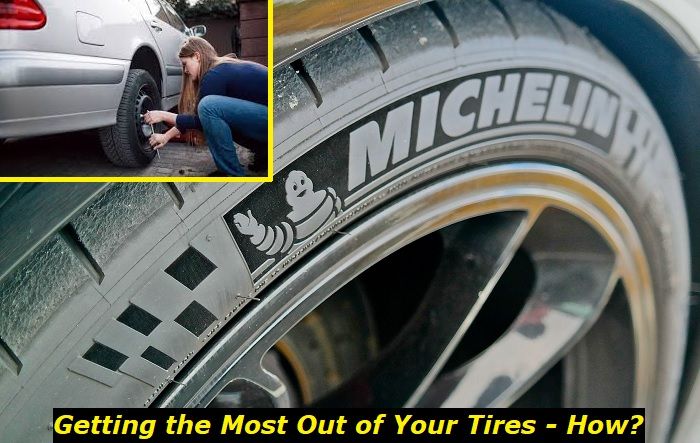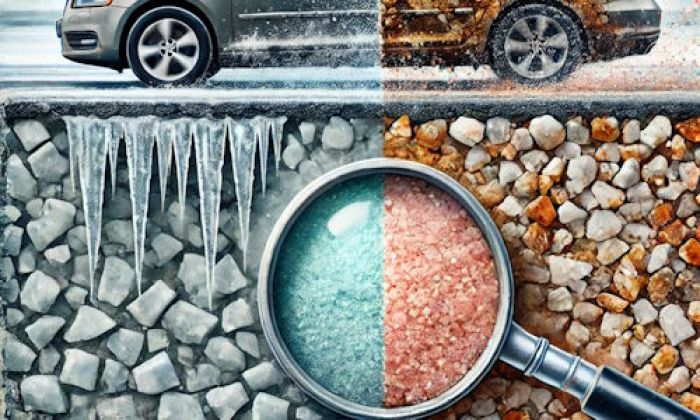One day, you enter your car, ready to go to work. But as you turn on the engine, you notice something is wrong. The engine feels rough, and your entire car is shaking. Your RPMs keep bouncing up and down as well. When you start moving, the symptoms lessen a little. Still, the ride isn't as smooth as it should be.
Engine idling problems highlights
- Level of urgency:Low
- DIY inspection:Possible but may be complicated
- DIY repair:Sometimes, possible
- Cost of repair:$150 - $600
- Can you drive?Yes
- Commonreasons:IAC valve, throttle position sensor, MAF sensor, carb problems, fuel pressure issues, air supply problems
- Ways to fix:Adjusting the system or replacing the faulty sensor or another part thatis diagnosedto be bad

What does it mean when your car misfires at idle?
Misfiring is a phenomenon that can affect all types of the internal combustion engine. When your vehicle misfires, it means the combustion doesn't happen in one or more cylinders. This results in power loss and poorer engine performance.
Misfiring results from the unsteady fuel supply. Depending on what caused it, it can happen just while your car idles. However, misfiring during acceleration is also a common issue many drivers have to face. In either case, it will lower the quality of your ride.
Is misfiring at idle a serious issue?
Misfiring by itself is generally not serious, especially it if doesn't happen often. However, it can become serious as time goes on. Frequent poor combustion strains the engine, causing it to wear down prematurely.
While you may be tempted to ignore this issue, we recommend addressing it as soon as possible. If your engine misfires at idle all the time, it likely won't go away on its own. Eventually, your engine will break. A damaged engine is not only expensive to repair but also dangerous to drive with.
How to tell if you're car is misfiring at idle? 5 common signs
Now that you know what misfiring is, it's time to take a look at what it looks like. The symptoms of misfiring are very specific, meaning you can't get them wrong.
Here are the 5 common signs your engine is misfiring:
- Strained idling
- Strange noise coming from the engine
- Black fumes
- 'Check Engine' light on
- Poor acceleration
1. Strained Idling
The first thing you'll notice is strained idling. When your engine misfires, your car may vibrate or even shakes. You'll also notice the RPM darting up and down erratically. When your car misfires at idles, it may sometimes cut the engine off completely.
2. Strange noise coming from the engine
Unlike with most car issues, you can hear a misfire. Whenever a cylinder loses power, the engine produces coughing noises. An odd sound here and there may not be a reason for concern. But if it happens all the time, you'll have to have your vehicle examined by a mechanic.
3. Black fumes
The most common reason why your car misfires at idle is poor air-fuel mixture. Your car may expel the poorly burnt mixture as foul, black smoke.
4. The 'Check Engine' light comes on
When your car detects a problem with your engine, it will light the 'Check Engine' message on your dashboard. Although it isn't specific to misfires, it can appear in response to these events. If it appears with the other symptoms on this list, the 'Check Engine' light is one of the surest ways you can tell your car's engine isn't functioning properly.
5. Poor acceleration
Although this doesn't happen while the engine idles, it often accompanies this symptom. Sometimes, the misfiring gets worse as you hit the gas pedal. This often points to sensor-related issues on your car.
What causes your car to misfire at idle? 6 common reasons
Now that you understand the symptoms, let's look at what causes your car to misfire at idle. Before you can fix the issue, you need to understand where it came from.
Here are the 6 common reasons why your vehicle misfires at idle:
- Broken spark plugs and other ignitions issues
- Damaged engine components
- Vacuum leaks
- Sensor and computer issues
- Exhaust issues
- Fuel intake issues
1. Broken spark plugs
An engine can't run without a good ignition system. The most important part of the ignition system is the spark plugs. These components carry electric current to the engine, igniting the air-fuel mixture. If faulty, the ignition won't happen at all.
But spark plugs don't have to be outright broken to malfunction. Even slight displacement can have serious consequences. If they are too loose, some air may escape from the system via these gaps. When this happens, the air-fuel mixture is compromised. Thus, your engine will keep misfiring.
How to fix it:
Spark plugs are one of those components that don't last forever. Their wiring gets worse with age. If you have an older car, this may be the reason why you experience misfiring at idle. Luckily, you can get them replaced for a relatively cheap price.
2. Damaged engine components
This is one of the more serious causes. Your car's engine will worsen with time. The wear and tear will damage the valves and pistons, reducing their performance. This can create gaps in the system which leads to vacuum leaks. But more importantly, it can throw the pistons out of sync. If even one cylinder lags behind, your engine won't produce enough power, leading to misfiring at idle.
But while it's normal for engines to deteriorate with age, poor maintenance can speed up the process. Make sure you keep oil levels high. The oil lubricates the components, reducing the amount of heat and friction they receive. If the levels run low, your engine will break down much faster.
How to fix it:
Engine repairs are very expensive. You may have to consider getting a new car if the engine is to blame.
3. Vacuum leaks
A vacuum leak is a loose term for an improperly sealed engine system. It happens when your engine components aren't air-tight, which means air escapes from the system. This compromises your air-fuel mixture.
But fuel isn't the only component necessary for combustion. It requires oxygen, and thus air, to burn. In case of a leak, the combustion chamber has more fuel than air. Thus, it doesn't burn properly. This leads to poorer performance and misfiring at idle.
How to fix it:
Unfortunately, vacuum leaks can be tough to locate. Your best bet is to take your car to the nearest auto shop.
4. Sensor and computer issues
The ignition and other aspects of the engine are controlled by the computer (PCM). The computer processes the data from sensors, ensuring that your engine runs smoothly. If either the computer or sensors go bad, you'll experience power loss and misfiring at idle.
How to fix it:
This cause is somewhat rare since computer issues often point to poor manufacture. You can have your car evaluated by a mechanic to determine if this is why your car misfires at idle. They have scanning tools that detect computer errors almost immediately.
5. Exhaust issues
The exhaust system carries out the waste fumes. This is important for preserving the correct air-fuel mixture. If it's clogged or the associated sensors don't work properly, these fumes will stay in the ignition chamber. As a result, the air-fuel mixture is compromised, leading to misfiring at idle.
How to fix it:
Unfortunately, exhaust issues rarely mean clogged exhaust pipes. You're more likely to run into issues with the exhaust gas recirculation system and the positive crankshaft ventilation system. You'll need help from a professional mechanic to address both.
6. Fuel intake issues
The last common reason why you may experience misfiring at idle is issues with fuel intake. The affected components are the fuel pump and fuel injector. Both ensure that the combustion chamber receives enough fuel to function. If faulty, the air-fuel mixture will be thrown out of balance. Low amounts of fuel can cause not only misfiring at idle but also stalling.
These components tend to get dirty and clogged with time. When your car isn't running, the leftover fuel can dry up and form residues in the fuel lines. Eventually, the entire system may become clogged. As a result, you'll experience misfiring at idle.
How to fix it:
In the case of fuel intake issues, prevention is the best medicine. Monthly maintenance is often more than enough to prevent this issue altogether. You can even invest in cleaning products designed to dissolve the residue. But if this doesn't do the trick, you'll have to visit a professional mechanic.
Our final thoughts on misfiring at idle
Misfiring at idle is an unpleasant symptom that happens when a cylinder doesn't receive a balanced air-fuel mixture. As a result, combustion isn't as effective at producing power as it should be. This loss of power thus reduces your car's RPM and overall performance.
The most common symptoms of misfiring at idle are shaking and noisy engines. Your RPMs may also jump up and down randomly. In some cases, you may also experience black exhaust fumes. If you drive your car in this condition, you may also have difficulties with acceleration.
Unfortunately, misfiring at idle can be caused by many components. Spark plugs are perhaps the most common ones. When they go bad, the entire ignition system is compromised, leading to misfiring. Other components responsible for misfiring at idle may be the computer, sensors, and fuel injectors. Sadly, you'll need help from a mechanic to fix most of these problems.
About the authors
The CarAraC research team is composed of seasoned auto mechanics and automotive industry professionals, including individuals with advanced degrees and certifications in their field. Our team members boast prestigious credentials, reflecting their extensive knowledge and skills. These qualifications include: IMI: Institute of the Motor Industry, ASE-Certified Master Automobile Technicians; Coventry University, Graduate of MA in Automotive Journalism; Politecnico di Torino, Italy, MS Automotive Engineering; Ss. Cyril and Methodius University in Skopje, Mechanical University in Skopje; TOC Automotive College; DHA Suffa University, Department of Mechanical Engineering






Add comment